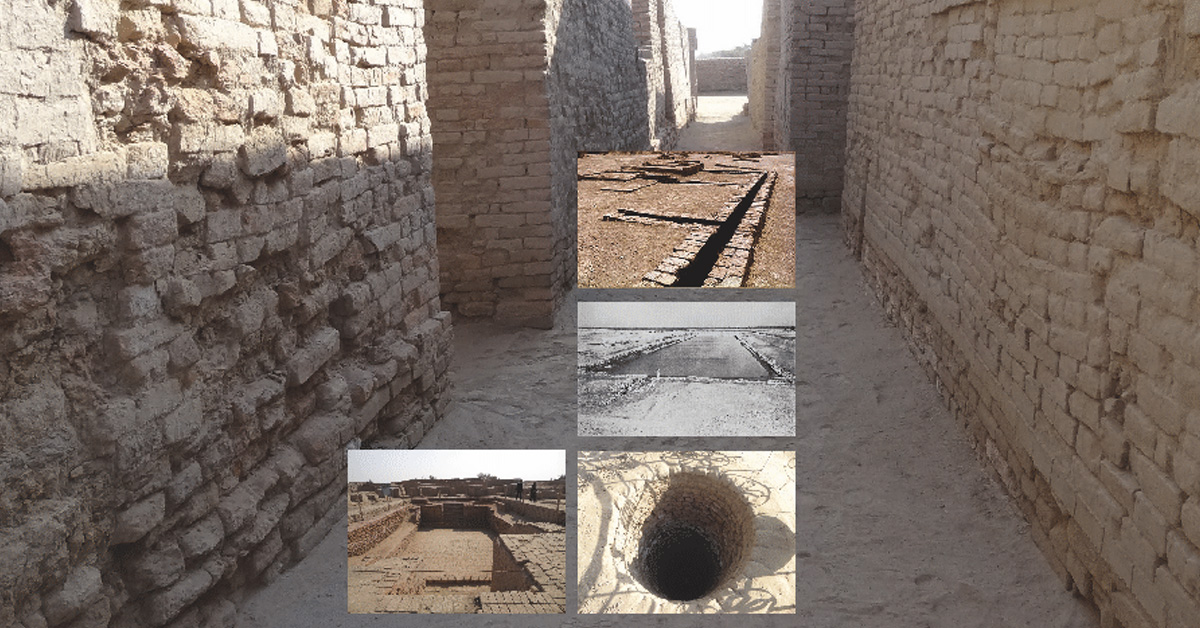While many harbour a common misconception that Indian antiquity was rudimentary, it is far from the truth. Be it architecture, skilled arts, metallurgy, astronomy, astrology or even visual arts such as shringar and coiffure, they were progressive for their times. In this article we’ll look at some of the scientific and technological advancements from Indus valley.
The earliest mentions of ancient Indian architecture can be traced back to the Indus Valley civilization, flourishing around the Indus river basin, extending into the Ghaggar – Hakra valley and the Ganga – Yamuna doab. One of the world’s earliest urban civilisations, it witnessed many advancements credited to Indian science and technology.
The Harappan architecture was known to be functional, with minimal emphasis on being decorative. Town planning was organised and towns were well-built. Towns were rectangular, with straight walls and straight streets that formed a grid-like pattern and divided the city into block sections. Houses were simple, ranging from one to three storeys. Uncommon to other contemporary civilisations, houses in the Indus valley were constructed with bricks, though stone and wood were also used. All houses were identical though, and built together in courtyards. Every household had continuous access to clean water from nearby wells and drainage facilities, including plumbing.
Bathing rooms and flush toilets connected to the main drainage system were common to most households, reflective of a prevalent urban sanitation system.
Excavations at Harappa have revealed that each house was built with vertical and horizontal drains, which further connected with street drains that were constructed underground. The conduits to the main drain were covered with flat stones and tile bricks and were further connected to larger sewerage outlets. The elaborate brick lined drainage system for the removal of rain water is of unparalleled engineering skill.
Sophisticated irrigation and water storage systems were also developed, including artificial reservoirs and canal irrigation systems. Water was irrigated from the huge spring floods that ran from the Indus river while the irrigation systems would clean and lessen the impact of flood damage.
Mohenjodaro was one of the biggest and wealthiest cities in the Indus Valley with the most significant architectural constructions. The two most striking buildings found here are the Great Bath and the Great Granary. Believed to have been used as part of a public bathing ritual for people to gather together, the Great Bath is considered the earliest known public water tank. The Great Granary, a massive building made of wood on brick foundation with 6 long halls and arching doorways is thought to have been used by farmers to store their crops and is one of its kind.
Evident from the excavations made at the Indus Valley sites, the inhabitants had developed a system of standardisation, using weights and measurement. They developed accurate methods of measuring length, mass and time by developing their own system of weights and rulers. This technical standardisation enabled gauging devices to be effectively used in angular measurements as well as those for construction. Calibrated measuring devices with further subdivisions in some devices have also been found. One of the earliest docks at Lothal (2400 BC) is located away from the main current to avoid deposition of silt. Oceanographers observed that Harappans must have possessed exemplary hydrography and maritime engineering knowledge in order to build such a dock on the ever shifting course of the Sabarmati river.
Based on architectural and textual evidence, Joseph E Schwatrzberg, a professor of geography at the University of Minnesota, has traced the origin of Indian cartography (the production of maps and geographical charts) to the Indus Valley civilisation. The use of construction maps plans, cosmological drawings and cartographical material have also been unearthed at the Indus archeological sites.
Interestingly, the grid layout planning of the cities with roads at exact right angles is considered a modern architectural system, and yet as is evidenced, it was a prevalent at the Indus Valley. The drainage system as referenced above too, was designed on scientific lines and was so elaborate that it has not been found anywhere else in the world in any city of the same antiquity! Only proving that our ancestral skills was unparalleled and unsurpassed.






Very informative
Wow …